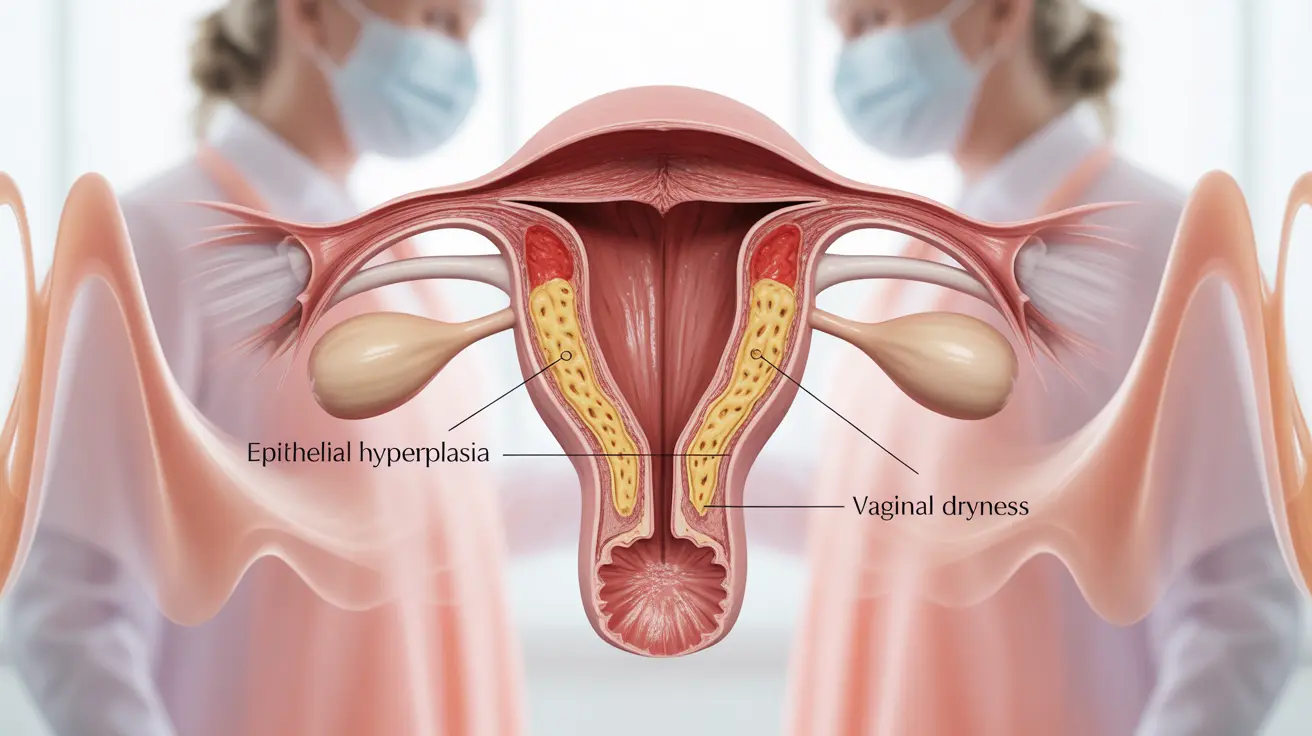Vulvovaginitis is a common inflammatory condition affecting the vulva and vagina that can cause significant discomfort and concern for many women. This condition occurs when these sensitive areas become irritated, inflamed, or infected, leading to various uncomfortable symptoms. Understanding its causes, recognizing symptoms early, and knowing when to seek medical attention are crucial for effective management.
While vulvovaginitis can affect women of all ages, it's particularly common during reproductive years and can significantly impact daily comfort and quality of life. The good news is that with proper diagnosis and treatment, most cases can be effectively managed and prevented from recurring.
Common Causes of Vulvovaginitis
Several factors can trigger vulvovaginitis, ranging from infections to environmental irritants:
- Candida (yeast) infections
- Bacterial vaginosis
- Trichomoniasis
- Chemical irritants (soaps, detergents, feminine hygiene products)
- Allergic reactions
- Hormonal changes
- Poor hygiene or excessive hygiene practices
Recognizing the Symptoms
The symptoms of vulvovaginitis can vary depending on the underlying cause, but common signs include:
- Itching or burning in the vaginal area
- Unusual vaginal discharge
- Redness and swelling of the vulva
- Discomfort during urination
- Pain during sexual intercourse
- Strong vaginal odor
When to Seek Medical Attention
While mild symptoms might resolve on their own, certain situations warrant immediate medical attention:
- Symptoms that persist beyond a week
- Severe pain or discomfort
- Unusual or foul-smelling discharge
- Fever or pelvic pain
- Recurring episodes
- Symptoms that worsen despite home care
Diagnostic Process
Healthcare providers typically diagnose vulvovaginitis through:
- Physical examination
- Review of medical history
- Vaginal pH testing
- Microscopic examination of discharge
- Laboratory cultures when necessary
- STI testing if indicated
Treatment Approaches
Treatment varies based on the underlying cause:
For Yeast Infections
- Antifungal medications (oral or topical)
- Over-the-counter treatments
- Prescription medications for severe cases
For Bacterial Infections
- Antibiotic medications
- Probiotics as supplementary treatment
- pH-balancing products
For Parasitic Infections
- Antiparasitic medications
- Partner treatment when necessary
- Follow-up testing to ensure cure
Prevention Strategies
Several lifestyle modifications can help prevent vulvovaginitis:
- Wearing breathable cotton underwear
- Avoiding harsh soaps and feminine hygiene products
- Proper wiping technique (front to back)
- Maintaining appropriate hygiene
- Using condoms during sexual activity
- Avoiding douching
- Managing underlying health conditions
Frequently Asked Questions
What are the most common causes of vulvovaginitis and how can I identify them?
The most common causes include yeast infections, bacterial vaginosis, and trichomoniasis. Each type has distinct characteristics: yeast infections often produce thick, white discharge; bacterial vaginosis typically causes thin, gray discharge with a fishy odor; and trichomoniasis may cause greenish-yellow discharge with irritation.
What symptoms should make me suspect vulvovaginitis and when should I see a doctor?
Key symptoms include itching, burning, unusual discharge, and discomfort. See a doctor if symptoms persist beyond a week, if you have severe pain, unusual discharge, fever, or if symptoms recur frequently.
How is vulvovaginitis diagnosed and what tests are typically done?
Diagnosis typically involves a physical examination, vaginal pH testing, and microscopic examination of discharge samples. Your healthcare provider may also perform cultures or STI testing depending on your symptoms and risk factors.
What are the treatment options for vulvovaginitis caused by yeast, bacteria, or parasites?
Treatment depends on the cause: antifungal medications for yeast infections, antibiotics for bacterial infections, and antiparasitic medications for trichomoniasis. Some cases may require both oral and topical treatments.
How can I prevent vulvovaginitis and reduce the risk of recurrence through lifestyle and hygiene?
Prevention includes wearing breathable cotton underwear, avoiding irritating products, maintaining proper hygiene without overdoing it, using condoms during sexual activity, and avoiding douching. Managing underlying health conditions and maintaining a healthy immune system also help prevent recurrence.




